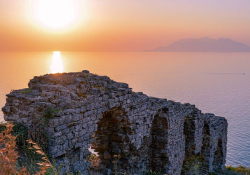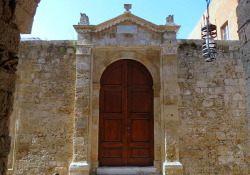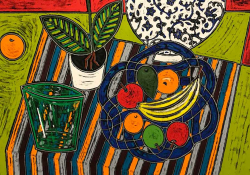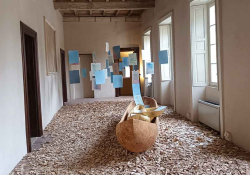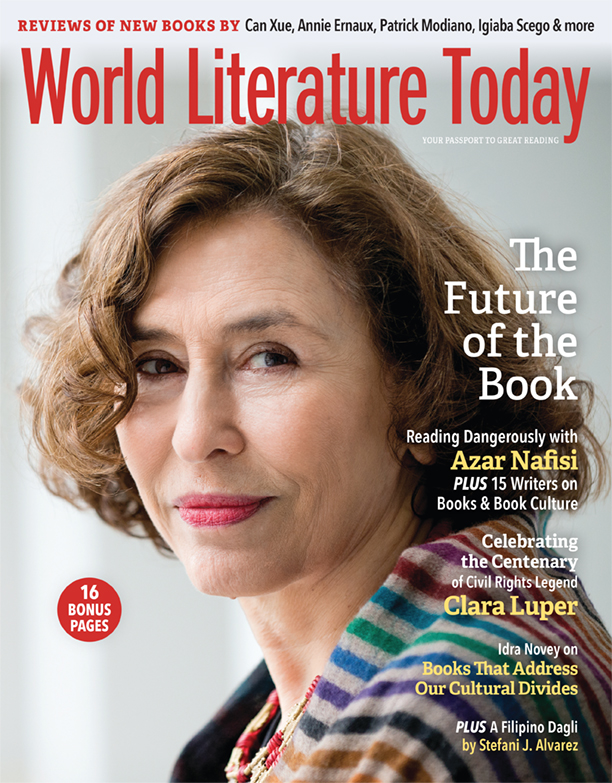Ece Cingöz’s Parelion: A Potter’s Dream Studio in Istanbul
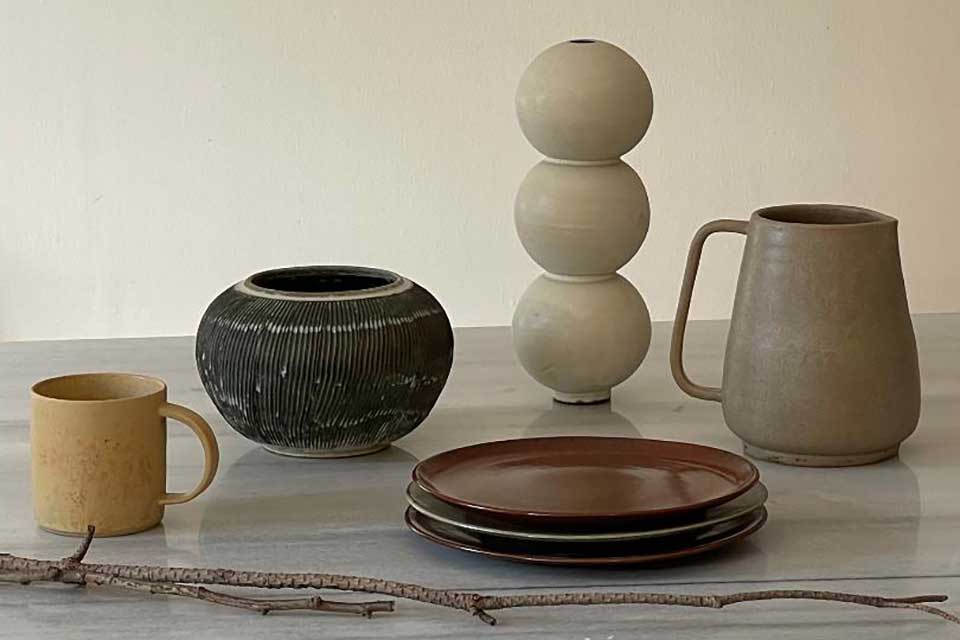 At certain times of day, around summer, there are peculiar, soft bursts of sunlight that beam through the leaves of fig and plane trees on the coast of the Sea of Marmara. Its rays fall gently over the stone garden wall at Parelion, a south-facing pottery studio run by a young woman from Izmir. For the last three years, Ece Cingöz has managed the workshop, design, and teaching space like clockwork. She even makes ceramic clocks, adapting the mythical motif of the ouroboros for their circular frames.
At certain times of day, around summer, there are peculiar, soft bursts of sunlight that beam through the leaves of fig and plane trees on the coast of the Sea of Marmara. Its rays fall gently over the stone garden wall at Parelion, a south-facing pottery studio run by a young woman from Izmir. For the last three years, Ece Cingöz has managed the workshop, design, and teaching space like clockwork. She even makes ceramic clocks, adapting the mythical motif of the ouroboros for their circular frames.
Although she prefers to be called a potter, rather than the fancier term “ceramicist,” her work bears an uncanny artistry, full of idiosyncratic symbols, emphasizing the inner wisdom of earth in all its rawest forms, from soil to clay, mud to gems. Her fascination with the ground beneath her feet, its natural material, compelled her to contemplate what vocation she might pursue while wayward in her earlier years as an aspiring video artist and advertising graduate, interning in Europe before working in a white-collar office in Istanbul.
Sometime in her late twenties, depression hit while she lived in a shared flat not far from a ceramic teaching studio in Istanbul’s district of Kadıköy on the Asian side of the Bosporus. She started taking classes, fulfilling her desire to work with her hands. Later networking through another studio, she found Teppei Yamashita, a Japanese teacher in Istanbul who spoke fluent Turkish. “He was a good teacher and encouraged me as a person,” she said, remembering fondly when she studied under his wing for about eight months.
“You have to work on your own and dive into the unknown,” Cingöz said. “I waited for one and a half years to study with Teppei. During that time I practiced every day after work. It was a primitive practice. You have to go through the painful road of working by yourself. You have to trust yourself in that process, to keep going.”
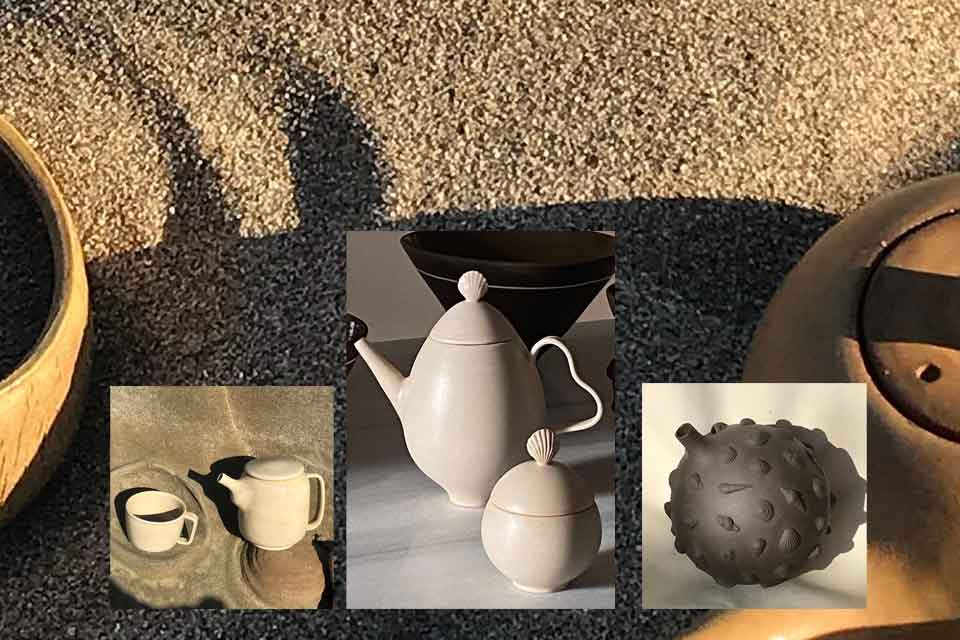
“You have to go through the painful road of working by yourself.” – Ece Cingöz
In a neighboring quarter, a fellow potter burned out and offered her vacant studio, but it was bought by a ceramics company that opened the space to new teachers. Yamashita supported Cingöz’s application. She flung herself into the job and earned a small circle of devoted students, pouring her heart into each of their learning processes. She soon opened Parelion from scratch in a studio that was closer to the sea. It had a yard shaded with tall trees that smelled of nettles and bay leaves. She tied a hammock, kicked up her feet, and called it her second home.
“Teaching was a win-win situation. My students gained the knowledge to produce fine work, and I started to earn a living,” Cingöz said. “I was happy to leave the office.”
Parelion is the Latin spelling of an ancient Greek word signifying the refraction of solar light through ice crystals high in the atmosphere. It is an apt moniker, given her bent toward the revitalization of classical Grecian vases and an affection for the roots of Izmir, which she likes to call Smyrna. Her work is imbued with a passion for fire, as is central to ceramics production. At Parelion, the backroom kiln is a treasure chest of surprises that regularly sprouts with characterful arrays of teapots, cups, plates, bowls, and novel designs.
Cingöz’s work is imbued with a passion for fire, as is central to ceramics production.
In the past year, Cingöz experimented with menorah candleholders on the eve of Hanukkah, stylizing their shape into a reminiscence of the Cretan, snake-bearing goddesses of antiquity, hearkening back to the island where her paternal ancestors originated. After producing them, she also conveyed heartwarming holiday greetings to Turkey’s tiny Jewish community, many of whom share their origins from Izmir. She is crafting more ceramic instruments after starting from ocarinas, and since trying her hand at the udu, traditional to Nigerian hand percussion.
Parelion’s teapots are perhaps most iconic to her ever-diversifying oeuvre. Instead of the conventional ring, she makes well-proportioned, organic handles that are conical and bulbous, protruding outward with an unmistakably sexualized aesthetic, a sensibility that she confirms is true not only in her work but throughout the prehistoric, largely ritualistic use of ceramics as ceremonial figurines. Her multicultural inspiration is concerned not only with the primordial but with such modernists as the Welsh potter Geoffrey Whiting or Turkey’s beloved Füreya Koral.
Like Whiting, Cingöz makes her earthenware with an endearing naïveté, placing an accent on practicality over design. Keen to appreciate Koral, who muscled the age-old Turkish craft of ceramics into the modern art canon, Cingöz often paints on her works. She has copied a Picasso plate and keeps books on Max Ernst, Paul Klee, Frida Kahlo, and Kunihiko Moriguchi among technical volumes. The textures and colors of her glazed surfaces at times appear as if they had been printed or wrought of geological processes beyond human ingenuity.
“In two years I envision Parelion as a country studio, somewhere on the Aegean coast, focusing on special commissions,” Cingöz said. “I do love teaching, but I’m still a student too.”
Istanbul

